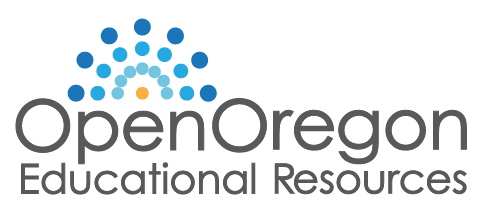Problem Statement
At many institutions, the current campus store model isn’t working for any stakeholder:
- Students can’t afford their course materials
- Faculty have a communication gap with the campus store
- Admin is having to put a lot of capacity towards problem solving
- Independent stores are losing revenue and being outsourced
- Third-party stores aren’t making enough money to stick with the contracts they make
- Revenue models like “inclusive access” limit students’ choices and ability to control their own costs. New federal rulemaking may limit this model soon in any case!
How can these institutions proactively get out of a campus store doom loop?
Join the Conversation!
Open Oregon Educational Resources and the Orbis Cascade Alliance invite you to a virtual half-day meeting to bring together OER champions, librarians, store managers, business officers, instructors, students, and other relevant stakeholders in Oregon.
- May 3, 9-1 Pacific
- Registration link
- This meeting will not be recorded
Outcomes of this meeting:
- Understand and revise the proposals below (please keep reading!)
- Elaborate the details of proposals so that institutions can make informed decisions about timelines, workflows, resources, etc.
- Identify and consider alternative student-centered proposals not suggested below
- Find out if any institutions are in a position to pilot a new model in the 2024-25 academic year
Can’t make it on May 3? Please share your thoughts via our Anonymous Feedback Form.
Agenda
9:00-9:10 Introductions and background on the issue
9:10-9:20 90-second position statements from stakeholders: instructors, librarians, administrators, and campus store managers
9:20-9:40 Breakout 1: Empathy building exercise
9:40-10:15 Breakout 1 takeaways
10:15-10:30 BREAK
10:30-10:40 Innovative Model in Practice: Break-Even Procurement with Cathy Germano, Senior Director, Library and Learning Services, Excelsior University
10:40-10:50 Innovative Model in Practice: Cooperative Procurement with Gary Westerland, Director of Auxiliary Services and Director of Bookstore Collaborative Services, Minneapolis College
10:50-11:00 Innovative Model in Practice: Consortial Procurement with Jesse Holden, Program Manager, Shared Content, Orbis Cascade Alliance
11:00-11:45 Breakout 2: Choose your own discussion topic
11:45-12:00 BREAK
12:00-12:30 Breakout 2 takeaways
12:30-1:00 Next steps
Proposals for Student-Centered Solutions
Oregon can be a national leader in course materials procurement by focusing on student needs. In this context, student-centered means we will cooperatively pursue solutions that:
- Lower costs
- Improve the user experience
- Meet accessibility needs by offering materials in multiple formats.
The proposals below could be done separately or together (they’re not either/or).
Proposal A: Break-Even Procurement Model
This model moves course materials procurement into institutional operations and is supported by the general fund. Students pay at-cost for the materials they are assigned (or don’t pay at all if OER or other no-cost materials are assigned). Course materials are no longer a revenue generator for the institution.
The campus store would continue to operate as an essential service and would generate revenue from swag, snacks, supplies, etc.
Proposal B: Consortial Purchasing Model
This model increases institutional purchasing power by forming or leveraging statewide consortiums. Oregon libraries and the Oregon Community College Distance Library Association have a demonstrated track record of finding efficiencies through consortial purchases. Examples where we could look for cost savings include:
- Bookstore inventory software
- Print copies of textbooks (commercial or openly licensed)
- Any required supplies that can be purchased in bulk (note about course materials vs supplies: Incidental Course Materials and Fees)
Oregon institutions could either form a consortium to contract with a third party bookstore that manages inventory and fulfillment; or institutions could partner on an effort to directly negotiate with vendors for books and materials. Either way, savings can be passed along to students. This model would need to work with both physical and online stores.
Considerations
Changing how we manage course materials procurement will involve in-depth discussion with all stakeholders involved in order to mitigate concerns and leverage our strengths. Here are a few issues that we have identified as needing careful attention:
- Staying within parameters of current contracts, being ready to change when contracts are up
- Campus stores often run in the red. Does either or both of these proposals pencil out to be the same or better than the status quo?
- Campus store employees are valued members of our communities. Their skill sets will continue to be relevant:
- Fulfilling need for print copies (ready-made or print on demand)
- Complying with Oregon’s textbook affordability policies and HEOA requirements
- Sharing and analyzing data about course material adoptions and cost
- Maximizing collaboration between libraries and bookstores. Examples:
- Library course reserves collections and class set collections
- Assigning library resources as course materials
- Library collection development policies that prioritize collecting course materials
- Is there any way to find student savings on required access code purchases?
- Will there be significant differences in the interests of small and large institutions?
- Will there be personnel or resource needs to support statewide coordination?
Roundup of related webinars
- Student-Centered Bookstore Models
- Inclusive or Exclusive? Examining “Inclusive Access” Textbook Programs
- Library/Bookstore Integration at Columbia Gorge Community College
- Minnesota State Colleges and Universities Bookstore Collaboration: The Power of Ourselves
- Innovative Textbook Procurement Models
Read this page in a Google Doc: Student-Centered Course Material Procurement Models.
